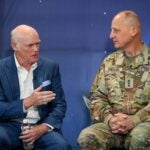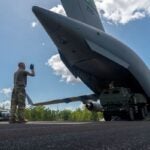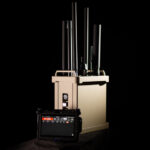
Settlement. Leidos has agreed to pay $1.5 million to resolve a False Claims Act lawsuit alleging that the company knowingly engaged in prohibited conflicts of interest as a contract for the Nuclear Regulatory Commission between 1992 and 2000, according to the Department of Justice (DoJ). The Justice Department says that Leidos, which was then part of Science Applications International Corp., held two contracts with the SAIC for scientific and technical services, including work helping the agency on a rule, and was supposed to avoid conflicting business relationships that could bias its work for the agency. DoJ says that Leidos, which was then SAIC, “repeatedly and falsely certified that it had no such conflicting business relationships, when SAIC actually engaged in multiple business relationships with entities that had a financial interest in the outcome of the NRC’s rulemaking effort.”
Resolved. OSI Systems says it has successfully resolved a matter with the Department of Homeland Security (DHS) related to a then unapproved Chinese part in its Advanced Technology X-Ray systems that led to the Transportation Security Administration (TSA) to cancel a contract with the company and a review by the department that could have led to the company being disbarred temporarily from receiving federal contracts. The company says it entered into an Addendum to the Administrative Agreement that it signed with DHS in June 2013 that extends the agreement to 2017. The original agreement stemmed from concerns related to company’s security division, Rapiscan Systems, that it modified threat recognition software in its body scanners without notifying TSA.
F-35 Mod Contract. The Navy Oct. 22 awards Lockheed Martin a not-to-exceed $111 million cost-plus-fixed-fee delivery order against a previously-issued basic ordering agreement (N00019-14-G-0020) for the F-35 program, according to a Defense Department statement. The contract is for the procurement and installation of 281 retrofit modifications kits to incorporate into designated aircraft and supporting subsystems that DoD says are critical to meeting F-35 requirements. The previously-issued basic ordering agreement is for air system post-delivery modification management services. Lockheed Martin is the prime contractor for F-35 with subcontractors Northrop Grumman and BAE Systems.
Orbital Orb-3. Orbital Sciences moves ahead with Oct. 27 as the launch date for its Orb-3 mission to the International Space Station (ISS) following an inspection of the tracking station in Bermuda after Hurricane Gonzalo, according to a company statement. Orbital previously warned that damage due to the hurricane could have further delayed the launch. The mission will originate from NASA’s Wallops Island Flight Facility on the eastern shore of Virginia. Launch is scheduled for 6:45 p.m. EDT. Orb-3 is the company’s third trip to ISS under NASA’s Cargo Resupply Services (CRS) contract to deliver cargo and supplies to ISS and the fourth trip, overall, to ISS. 
F135 SL-3 Test. The Air Force performs a successful accelerated mission test (AMT) of Pratt & Whitney’s F135 conventional takeoff and landing (CTOL)/carrier variant engine, according to a service statement. The test took place in the Sea Level 3 test cell (SL-3) at the Arnold AFB, Tenn., Engineering Development Complex (AEDC). A total accumulated cycle (TAC) count of 2,600, with record TAC accumulation of 80-90 per day, was accomplished during the test. This test was the first 2,600 TAC accelerated mission test on the F135 at AEDC. The F135 engine is used in the F-35. Pratt & Whitney is a division of United Technologies Corp.
AFSCN CPP. The Air Force on Sept. 17 awards four firm-fixed-price contracts under the Air Force Satellite Control Network (AFSCN) Commercial Provisioning program, according to a service statement. Raytheon receives $52,965; Intelsat General $59,290; Universal Space Network $90,000 and Northrop Grumman $124,992. The contract seeks qualified providers of satellite tracking, telemetry and communications (TT&C) services to perform a three-month analysis on their ability to support several specific subsets of AFSCN users. The selected awardees provide a detailed description of their technical approach, along with estimated service costs, to provide TT&C services for each user set. Information from these reports are used to make a government decision on whether a commercial provisioning approach is suitable for the AFSCN. The Air Force on Sept. 24 also awarded Metispace a small business set-aside for AFSCN CPP.
Energy Focus Contracts. The Navy awards Energy Focus, Inc., of Ohio, a pair of contracts totaling $15.6 million for the company’s light emitting diode (LED) retrofit tubes, according to a company statement. A $7.7 million contract was issued Sept. 11 and another for $7.9 million, the single largest in company history, on Oct. 7. Energy Focus expects the order to deliver throughout the first half of 2015. Energy Focus calls its LED retrofit tubes the industry’s only true plug-and-play technology based on proprietary and patented circuit designs that allows for direct fit into existing fluorescent sockets with our without the ballast in place. The company says upon delivery of this order in the first half of 2015 the Navy will have converted just over 10 percent of its fluorescent tubes with Intellitube.
New Seat. Defense Mobile Corp. says Peter Pace joined its Board of Directors. Pace retired as the 16th Chairman of the Joint Chiefs of Staff. Built by veterans and supported by a 100 percent veteran-staffed Member Care organization, Defense Mobile says it is launching a nationwide 4G mobile service and a set of value-added applications that are designed to benefit, honor and reward veterans and U.S military service members for their commitment and service. “I am pleased to join Defense Mobile’s Board and to support the company’s mission of connecting and improving the lives of veterans and those still serving in uniform,” Pace says.
Geospatial Data. Harris Corp. provides geospatial data services for the National Geospatial Intelligence Agency under a potential $770 million in indefinite delivery/requirements contracts for up to five years. Under Foundation GEOINT Content Management (FGCM) contracts, Harris will create high-quality data and products of the Pacific, North America, South America, and Africa regions of the world for use by the U.S. intelligence community and military. FGCM will contribute to and maintain a comprehensive, geospatially accurate map of the world that can be accessed quickly as intelligence, operational, and crisis needs arise. Harris says it will use its One Feature One Time database, which automatically eliminates data redundancy and stores the most current representation of each geospatial feature.
Study The Upgrade. The U.K. MoD taps the Raytheon U.K., Thales U.K. team to conduct a one-year study into upgrading existing Identification Friend or Foe (IFF) systems to Mode 5, which will address NATO’s requirement for a new standard of IFF across all platforms. The two companies are offering the Thales Bluegate products covering the majority of naval and land system Mode 5 Interrogator applications as well as Raytheon UK’s IFF4810 Mode 5 upgrade solution for most air and naval Mode 5 transponder uses. Raytheon and Thales’ IFF Mode 5 subsystems use a common US-sourced KIV-77 Mode 4/5 cryptographic computer, which is more secure, deception resistant and already in service with the U.S. military.
Greenert Issues LDUUV challenge. Chief of Naval Operations Adm. Jonathan Greenert issued a challenge to industry and the Navy at the Naval Submarine League on Thursday, saying that “by the end of this decade, we ought to be sending an autonomous unmanned Large Diameter UUV (unmanned underwater vehicle) on missions.” Greenert says the LDUUV wouldn’t be expected to start its work in the most challenging geographical locations or the most challenging security environments, but the Navy-industry team does need to move with urgency to get that technology into the field to help guide the development of future improvements and payloads.
… Nuclear Shipyards Almost Out of Rut. Greenert also says in the same speech that the Navy’s nuclear-capable shipyards had been severely impacted by recent budgetary crises, which led to maintenance schedules and, therefore, deployment schedules being thrown off. “We got out of whack a little bit on these things through no one’s real specific fault. But through continuing resolutions, sequestration, furlough, hiring freeze, the inability to do overtime, we got behind in the nuclear shipyards …We’re almost out of that, we should be back at about what I think a sweet spot is, a 7-month deployment, by 2016.”
GD Canada To Update Radios. General Dynamics Canada won a $108.6 million, three-year contract to upgrade the Canadian Forces’ fleet of Combat Net Radios. A team including GD Canada, Rockwell Collins Canada and SigmaPoint Technologies will provide hardware and software upgrades for more than 11,000 radios and 6,800 vehicle interfaces. The upgrades will allow the radios, originally bought in 1991, to allow simultaneous voice, messaging and positional awareness reporting capabilities, as well as increase the speed of data transmission to more closely match newer radios. Initial delivery is expected in May 2015 and will continue through 2017.













